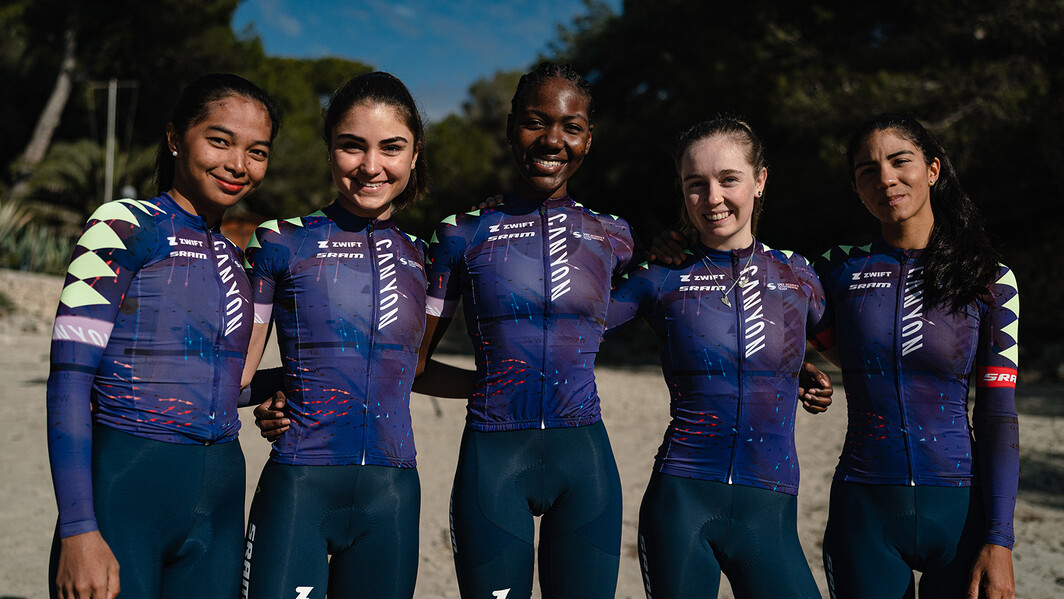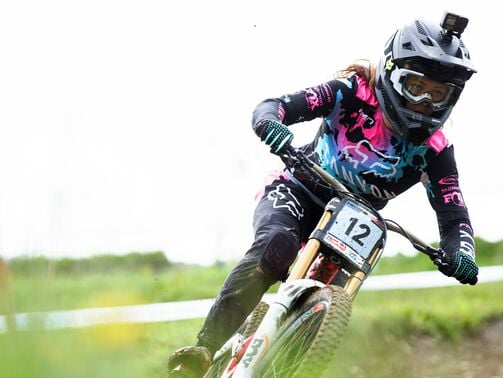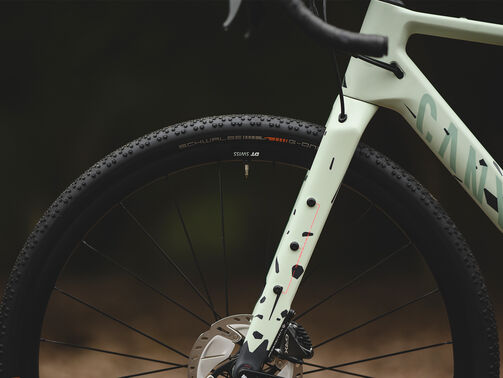Agua Marina Espínola Salinas’ CANYON//SRAM Generation journey
Paraguayan rider Agua Marina Espínola Salinas talks us through her journey to joining CANYON//SRAM Generation.
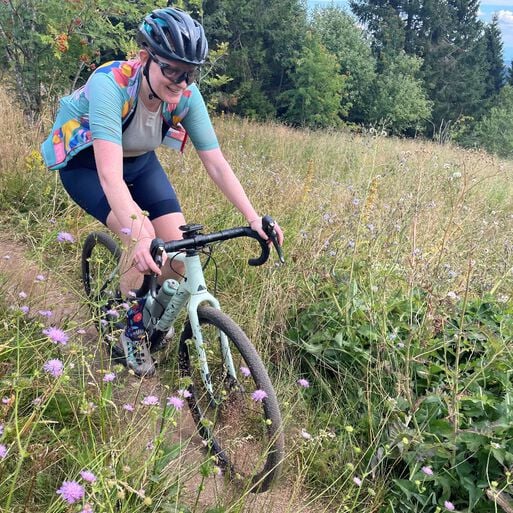
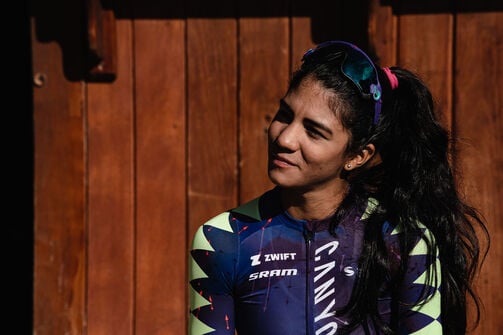
Over three-quarters of riders in the women’s professional peloton come from Europe. Cycling is an inherently white, European sport. Conventional pathways predominantly exist in European, North American and Australasian countries. It’s no surprise then that just 3.4% of the women’s peloton are South American.
As part of Canyon’s commitment to diversifying cycling, we want to create a pathway to the sport for all women. Under the same stewardship of the hugely successful Canyon//SRAM Racing Women’s World Tour team, CANYON//SRAM Generation was born. The teams’ values are the same and the CANYON//SRAM Generation kit design echoes that of the World Tour team but with its own unique aesthetic.
A worldwide search for talented riders began in early 2021. The team received an astounding 239 applications from women of 62 different nationalities. The final selection included riders from Namibia, Sierra Leone, Rwanda, Malaysia, Jamaica, Germany and Paraguay.
The team aims to develop these riders into World Tour professionals, unleashing their potential and catapulting them to the top step of podiums on the UCI racing calendar. Opening up development teams like CANYON//SRAM Generation is one of the ways we can improve accessibility to the sport for the better.
To get the low down on what it means to be part of this ground-breaking team, we spoke to Paraguayan rider Agua Marina Espínola one balmy April evening. It’s the beginning of the season and she’s gearing up for the year ahead.
She just flew into Girona from her home city in Paraguay after needing to address some paperwork. “I got to the airport here in Barcelona and I was questioned about my residency and visas,” she reveals. “They asked me so many questions, it’s so hard sometimes.” When the odds are already stacked against you achieving your potential, even the more routine checks and balances can seem arduous.
But this is far from a sob story. Agua is one of the happiest riders you could ever have the pleasure of interviewing. The enthusiasm and passion with which she speaks is unwavering. However, there’s no getting past the multitude of barriers that she and other non-European riders have to overcome to get into professional cycling.
Bikes and kit
Competing in cycling requires a huge investment in equipment: a road bike and basic cycling kit at the very least. At the age of 11, Agua spotted cyclists on her local roads. “I thought, ‘oh those are amazing, I want to ride one of those!’” And it was then that she found her love for the bike.
“I was like, ‘oh I want to be on one of them!’” said Agua of the first time she saw a road bike. “The shape of the handlebars and the tiny wheels…that’s not a bike, that’s a piece of art. Since then, it’s become an obsession and I used to look at bikes on the internet and dream of having a road bike.”
“When you turn 15 in South America, your parents throw you a party or you can ask for a special present for example a car, or a trip away or a motorbike,” she adds. “So, I had an idea: I want a road bike – not a party! I proposed that to my parents and my dad was like ‘no, no you can’t have that’ and because of that, it made me even more determined to get a bike.”
Agua’s mother was a little more diplomatic with her request and she suggested that Agua talk to the cyclists she saw. Agua did just that a few weeks later when she explained her predicament and her dream. Eventually they got back to her and offered her a steel bike. Just two months later, she was racing on it.
“At that time, there was just one other girl [racing] but she wanted to race with the guys. I was therefore the only girl racing in my category,” recalls Agua. “It was a peloton of around 50 across all categories. I got dropped but I kept going and going. I ran out of water, but I kept climbing and climbing. Eventually, I got to the finish line and I found my friends. And they asked how I got there."
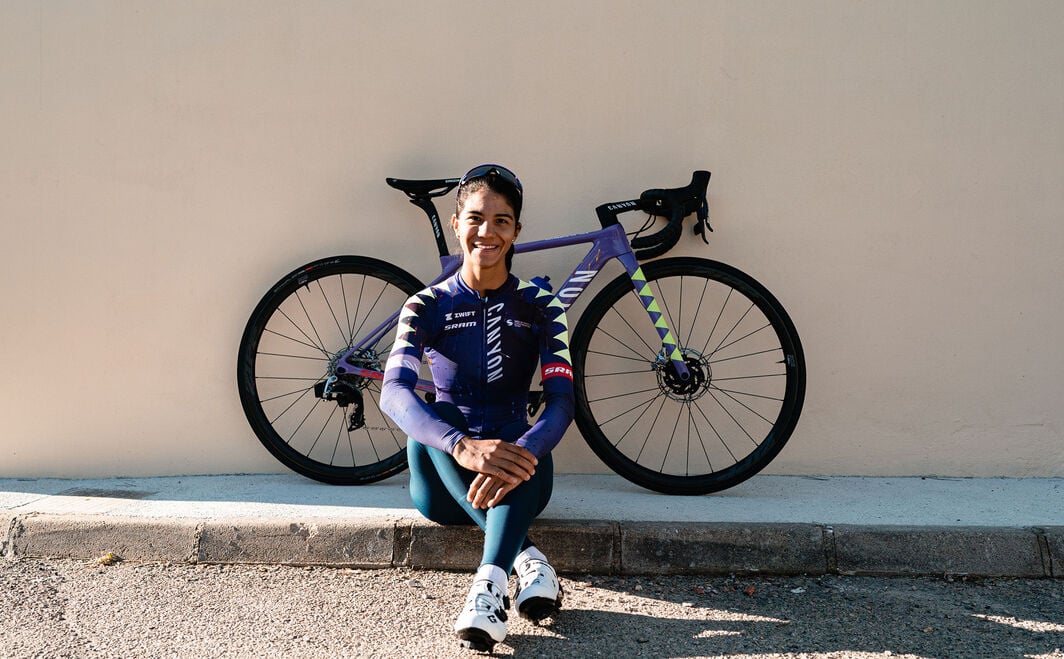
"They asked who brought me, did I jump in a car? They said, ‘this climb is really hard!’ and I didn’t know which one they were talking about,” laughs Agua. “They looked at each other wondering whether I really did the 70km. I know I took ages but I’m here you know. They were impressed, so they spoke to some other people. [At the time] we had a national coach from Colombia and they said look at this girl, she just finished this race!”
The coach offered to help Agua. Before long she raced more and won races in Paraguay. She branched out into races in Brazil, Argentina and the Pan American Games. “After these events, the government started to help athletes, so I got more support and I soon had a nice bike!” she says.
It’s evident throughout my conversation with Agua that a lot of her success came from within. She didn’t get to where she is now without determination and tenacity. “When you have many situations that go against you, it makes you stronger. It’s not a cliché, it’s the truth. First my father telling me I can’t do something gave me determination, then the barriers against me motivated me,” she explains. “People kept telling me if I go to Europe, it will be really hard, so I used to say, ‘ok but I can try!’”
I wanted to understand who nurtured this determination within Agua, since it appears it was instilled in her from such a young age. “I think women are really strong in Paraguay because of our adversity,” she explains. “Paraguay has a really male mentality – only men can succeed. If men can’t do it, women certainly can’t. Some people are frustrated that they didn’t get there and they don’t want others to either,” she continues.
“During the war, women were left by their husbands and they had to repair the country while the men fought. They inspire me. They raised 10-12 children alone, so there’s no reason why I can’t ride my bike and be strong. Even my own mum, she was alone and she went to another country when she was younger than I am now. She got a house for us and did everything to make sure we had a better life.”
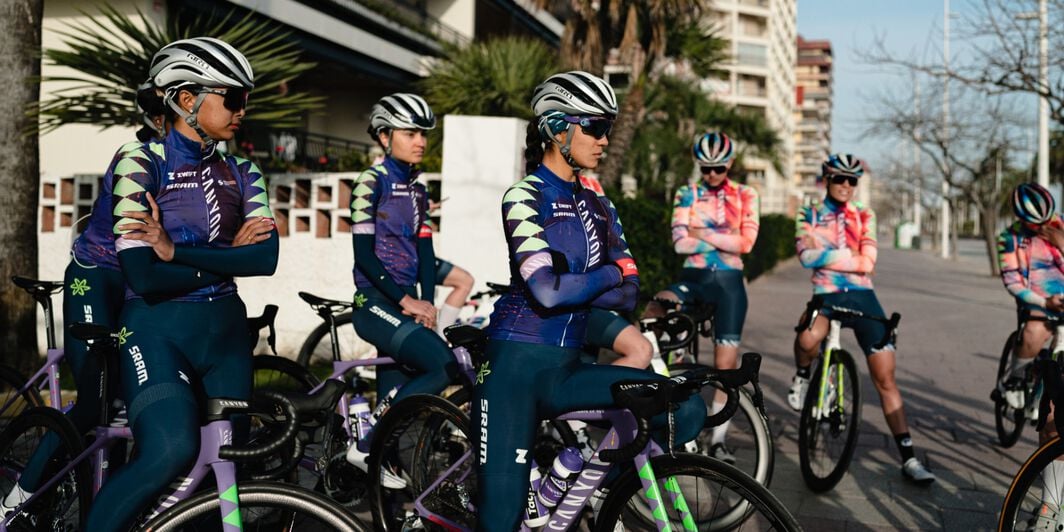
Realizing a dream
Following support from the government and those around her, it was time for Agua to step it up a level. But when you’re a world away from the heart of professional cycling, how do you get there?
In a twist of fate and fortune, Agua reveals that the person who gave her the steel bike was in fact her now boyfriend. “His dream was to be at the Olympics but he didn’t make it. It was harder for him,” she reveals gingerly. “So, I reached out to him after a few years because I wanted to do the same. ‘Even though you didn’t go to the Olympics, maybe I could?’” she thought. “Maybe I won’t go to the Olympics, but now maybe ten other girls will try and eventually we’ll have a Paraguayan rider on the podium,” she adds with the fervor and commitment I’ve come to expect from her at this point.
Agua had experience with professional cycling prior to joining CANYON//SRAM Generation. It was this, coupled with her increasing mental and physical strength that led her to a place on the Paraguayan Olympic Team in Tokyo. An historic moment, as she is the first cyclist to ever represent Paraguay at an Olympic Games.
“I wanted to go so badly but I found out [the course] was really hard and I began to doubt myself,” she admits. “It was scary because I wanted to do well. I didn’t want to go to the Olympics and get dropped on the first climb. I wanted to show myself, show my country that we’re there. I still have a lot of years ahead to prove myself even more.”
Her presence at the Olympic Games did not go unnoticed and Agua is viewed as a national champion among her peers. “The riders coming from Paraguay now are really committed and we have a really good Paraguayan mountain biker,” she says referring to compatriot Samira Noemi Martinez Mendez. “She told me I’ve been her inspiration. She saw me on the Women’s World Tour and she said she wants to win a [XCO] World Cup.”
The things we’re afraid of are the things we need to do, to get where we need to be.
Agua Marina Espínola Salinas - Canyon//SRAM Generation team member
Becoming the best with CANYON//SRAM Generation
Agua is so humble during our conversation. She’s a young woman navigating a patriarchal world from a country not synonymous with professional cycling. The road to achieve her goals is steep and undulating. It wasn’t paved with riders like Agua in mind, so how does she see it playing out?
“I want to be the best rider in South America. I know I have a lot to learn and a level I need to reach, so I’m working on that,” she says. “It comes in waves but I know I’m getting closer. I dream to be in the Women’s World Tour team but I am also really conscious that I have a lot to learn to get there. I’m working on these things though.”
She can read a race, built from experience of bunch racing with her previous team. But she confesses that descending and peak power outputs are her biggest weaknesses.
“My numbers aren’t bad. They’re good! But racing is super different and I lack that explosive power sometimes. I sometimes have to chase back, so that’s an obvious weakness. I’m happy to be in this team and develop my weaknesses into strengths,” she says.
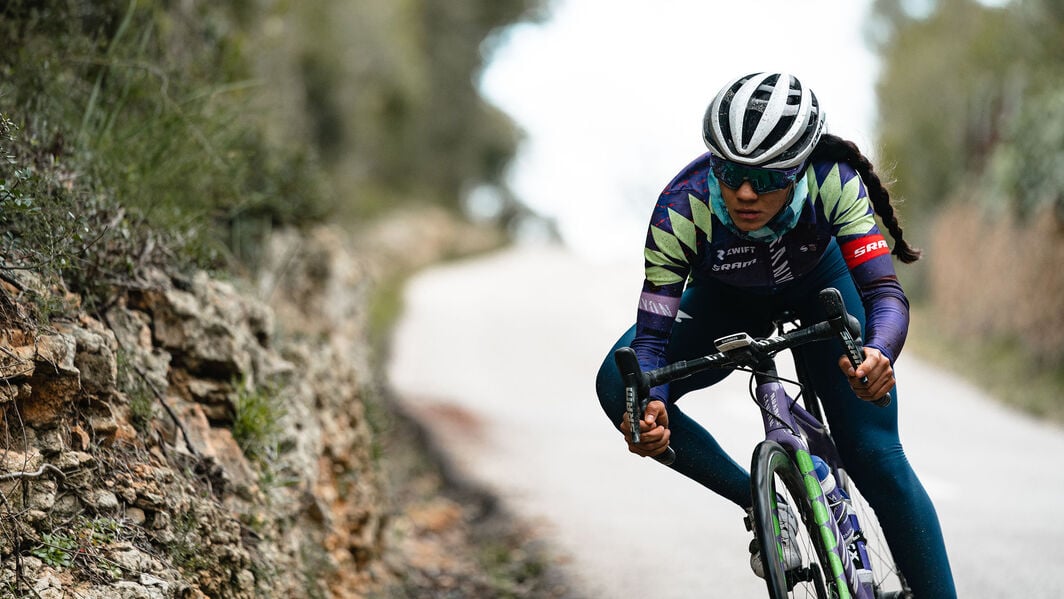
As well as developing herself as an individual, Agua is keen to share how teams like CANYON//SRAM Generation are shaping the future of women’s cycling as a whole and nurturing talent.
“Other teams will see that this works and that it’s necessary. Nobody wants to develop a rider, they want strong riders, so development teams are necessary,” she says. “I know the first issue is money but once they realise they need it… Taking riders from other [World Tour] teams is expensive, so you have to improve the pay and conditions. If you employ a development rider, it’s cheaper for teams.”
The only other women's development team used to be the World Cycling Centre based in Aigle in Switzerland. The majority of teams pick riders from here without going through their own development program. "Why don't [they] set up a development team?" argues Agua. "Some teams don’t like to figure out visas and are unfamiliar with our countries but this is the future,” she adds.
“A lot of the riders who raced for the World Cycling Centre team are now on the World Tour. It’s not that we can’t race, it’s that we don’t have the access and the chances,” she says frankly. It’s impossible to argue with this logic and I wonder how much untapped talent exists in the world. How many other riders like Agua are striving for their chance to prove themselves?
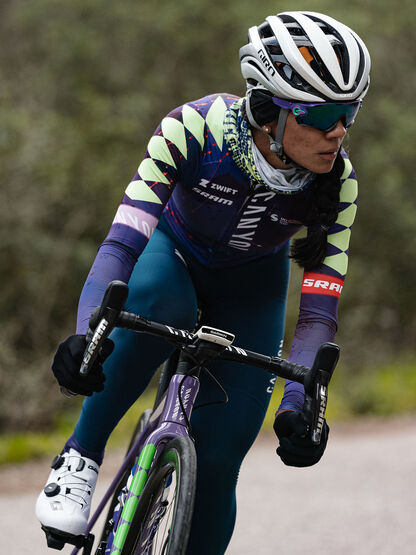
I ask whether she feels pressure in blazing this trail for the good of those who will inevitably come after her. “Sometimes I feel the pressure but then I say to myself ‘don’t be afraid, you knew it would be like this!’” she laughs. “People watch me and they see it’s possible and they will try. I love to do it. I love to talk with others who dream the same. I’ve learned a lot over the years, so I can give advice on the good way to do things. I might not be the one to win a world championship but I can inspire someone else to have a go at it.”
Hopes, dreams and what’s next for Agua
It’s clear that Agua is building her form in the short term, but I want to understand what the future looks like for her.
“I’m scared of failure regarding my dreams,” she admits. “That’s something we all have, right? Whatever we do, we’re afraid to fail. But that’s a reason to do it. The things we’re afraid of are the things we need to do, to get where we need to be.”
“Looking back gives me hope. Looking back at what I already did and where I’ve come from. If I already did all this, there’s no reason I can’t get even further,” she continues. “It’s good to remember what you’ve done already to keep you going.”
“I’m 26 now but I see a lot of top riders reaching their best later,” she says as we refer to Movistar rider Annemiek van Vleuten continuing to improve as she approaches 40 years of age. “It’s just about having the enthusiasm and passion to do it. Of course, you can get burnt out in the middle but you can make that choice to continue if you want to continue. I’m going to keep going and find my way.”
Did this article help?
Thank you for your feedback
-
 About the author
About the authorGrace Lambert-Smith
Meet Grace, our SEO Copywriter who calls the Peak District National Park home. An experienced long-distance road cyclist, she's now focused on mastering the art of gravel riding and mountain biking. With a passion for telling cycling stories through the written word, Grace is always ready to share her experiences with others.
